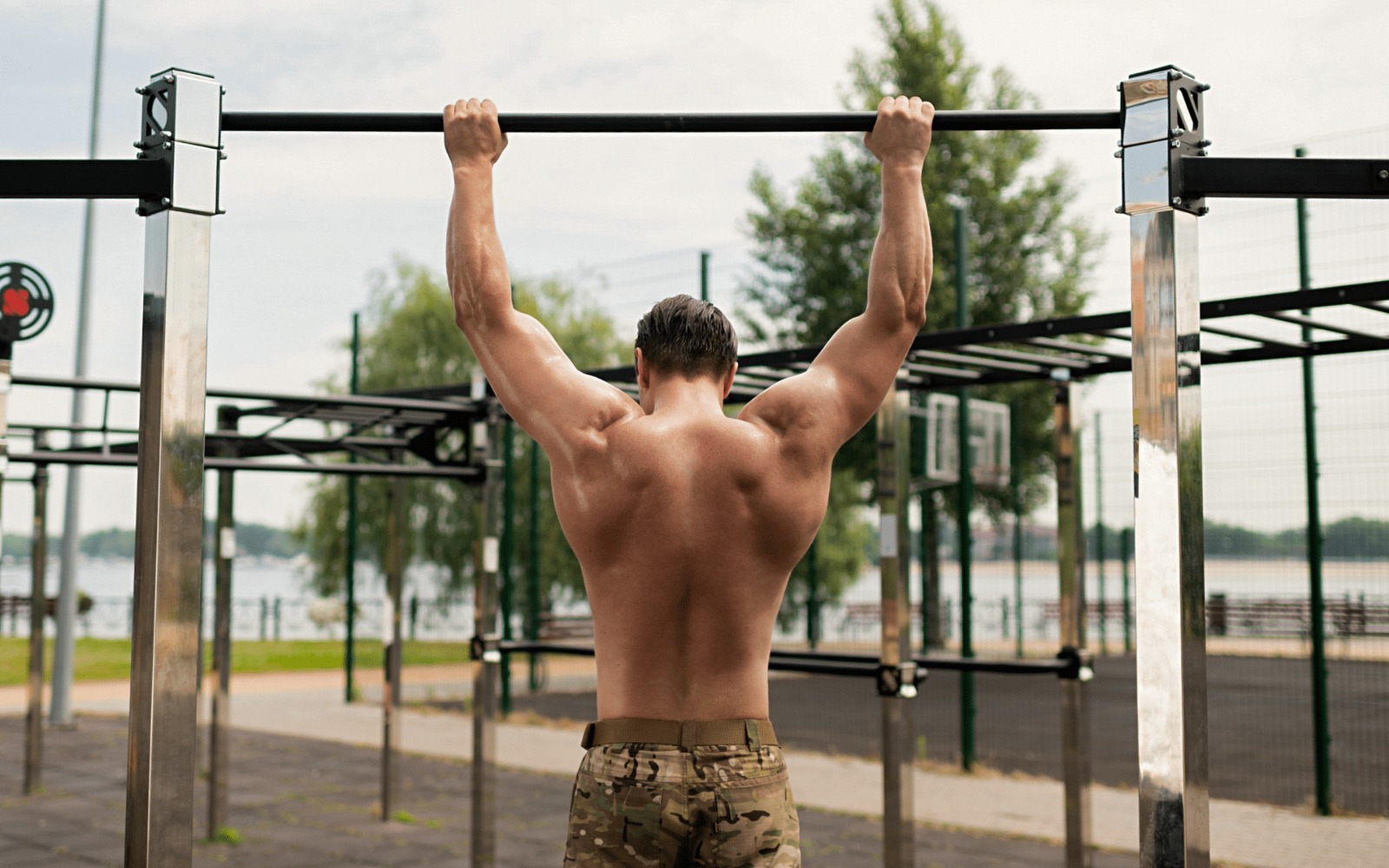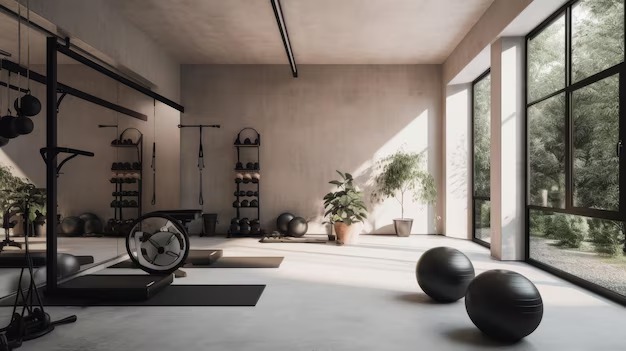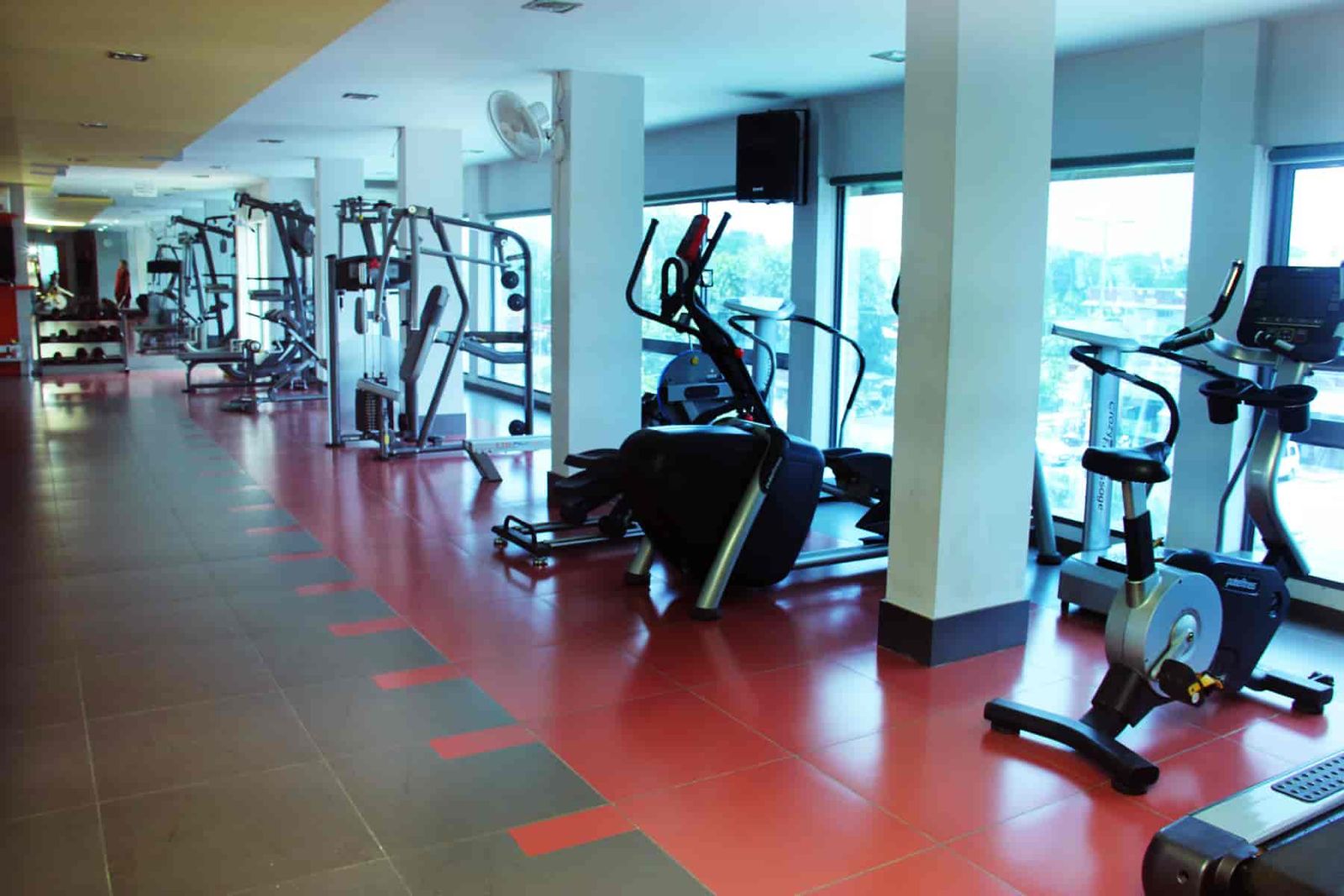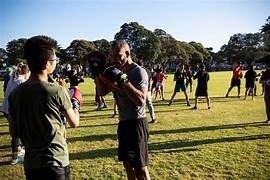
Calisthenics Mastery: Control, Balance, and Body Awareness.
Calisthenics is the art of mastering your own body through strength, control, balance, and awareness. By focusing on precise movements, mindful practice, and functional strength, it transforms physical capability and mental discipline alike. From basic exercises to advanced skills, calisthenics cultivates mastery, resilience, and a harmonious mind-body connection, making every movement intentional and every practice transformative.
💪 Fitness Guru
57 min read · 23, Oct 2025

Introduction: The Art and Science of Calisthenics
Calisthenics, derived from the Greek words kallos (beauty) and sthenos (strength), represents the purest form of human movement. It is the practice of using one’s own body weight as resistance to build strength, coordination, and mobility. Unlike traditional gym workouts that rely heavily on machines or weights, calisthenics relies on balance, control, and the mindful connection between body and mind. From simple push-ups and squats to advanced moves like handstands, planches, and muscle-ups, calisthenics challenges both the body and mind to work as one cohesive system.
What makes calisthenics truly fascinating is not just the aesthetic physique it builds but the awareness it cultivates. Every rep, hold, and transition teaches precision, patience, and a deep understanding of your body’s capabilities. The goal isn’t simply to become stronger—it’s to become more conscious of how you move and why you move the way you do.
1. Understanding Calisthenics: The Foundation of Body Control
Calisthenics is built on the principle of functional strength—the kind that helps you move naturally and efficiently in real life. The foundation lies in mastering basic movements that engage multiple muscle groups simultaneously. Movements like push-ups, pull-ups, squats, dips, and planks teach stability, coordination, and core engagement.
Unlike weightlifting, where the body often isolates specific muscles, calisthenics demands full-body synergy. For instance, performing a simple pull-up involves not just your back and arms but also your core, glutes, and even your grip. This interconnected approach promotes better movement mechanics and reduces the risk of injury.
Moreover, calisthenics is scalable—beginners can start with wall push-ups or knee planks, while advanced athletes can progress to one-arm push-ups and human flags. The key is gradual progression, where mastery of fundamentals lays the groundwork for complex skills.
2. The Power of Control: Strength in Precision
Control is the heartbeat of calisthenics. In this discipline, how you perform a movement is more important than how many repetitions you can do. A slow, deliberate push-up engages more muscle fibers and demands far greater mental concentration than a rushed set.
Control builds neuromuscular efficiency—the ability of the brain and muscles to communicate effectively. This connection allows you to fine-tune every contraction, stabilize your body during difficult transitions, and hold static positions like the planche or L-sit.
For example, consider the handstand: it’s not merely a feat of strength but an exercise in balance and control. Maintaining a stable handstand requires micro-adjustments in the shoulders, wrists, and core, guided by constant sensory feedback from the nervous system. Each small correction reinforces your body’s awareness and coordination.
Calisthenics athletes often train with a focus on time under tension—holding positions or performing slow repetitions to challenge stabilizing muscles and increase endurance. This not only develops strength but also cultivates patience and discipline, essential traits for long-term mastery.
3. Balance: The Centerpiece of Calisthenic Mastery
Balance is both a physical and mental pursuit in calisthenics. It’s the art of maintaining harmony between strength and stability. Whether you’re performing a pistol squat, crow pose, or one-arm handstand, balance requires total control over your body’s center of gravity.
Physically, balance improves proprioception—the body’s ability to sense its position in space. Training on unstable surfaces, practicing handstands, or holding planks on different angles forces your body to adapt and recalibrate continuously. Over time, this enhances coordination and agility in everyday movements.
Mentally, balance teaches focus and mindfulness. It’s impossible to balance effectively if your mind is distracted. Athletes often describe entering a “flow state” where concentration sharpens, and body and mind synchronize seamlessly. In this state, every muscle knows what to do, every breath is controlled, and every movement feels natural.
Balance also translates to injury prevention. A balanced body distributes weight evenly across joints and muscles, reducing strain and promoting longevity in training.
4. Body Awareness: The Mind-Muscle Connection
Perhaps the most profound benefit of calisthenics is body awareness—the deep understanding of how your body moves and responds. This awareness comes from consistent practice and mindful observation.
Body awareness encompasses three key dimensions:
- Spatial Awareness: Knowing where your body is in space.
- Internal Awareness: Understanding which muscles are active and which are relaxed.
- Kinesthetic Awareness: Sensing the movement, direction, and speed of your body parts.
When you perform a pull-up or a plank with awareness, you’re not just moving through motion—you’re actively engaging the right muscles, maintaining correct posture, and controlling your breathing. This mindful execution not only enhances performance but also minimizes injuries.
Moreover, calisthenics connects physical awareness with emotional intelligence. Learning to listen to your body—recognizing fatigue, respecting recovery, and celebrating small progress—cultivates a sense of self-respect and mental resilience.
5. Mental Discipline and Patience in Calisthenics
Unlike traditional fitness programs that promise quick results, calisthenics demands patience. Progress often comes in slow, measurable improvements—an extra second in a handstand hold, a smoother transition into a muscle-up, or a deeper range in a squat.
This slow evolution builds mental toughness. Each failed attempt becomes a lesson in persistence. Calisthenics practitioners learn to enjoy the process rather than chase quick wins. This mindset of growth over perfection strengthens not just the body but also the spirit.
Meditation, visualization, and breath control play vital roles here. Focusing on breathing patterns during exercises enhances oxygen flow and helps maintain composure during demanding movements. Visualization, on the other hand, prepares the mind for success by mentally rehearsing movements before physical execution.
Over time, the discipline cultivated through calisthenics spills into other aspects of life—work, relationships, and mental health. The same patience that helps you hold a handstand teaches you to handle life’s challenges with grace and control.
6. Training Principles for Calisthenics Mastery
To achieve control, balance, and body awareness, a structured training approach is essential. Here are the core principles that guide calisthenics training:
- Master the Basics: Start with fundamental movements—push-ups, pull-ups, squats, dips, and planks. Build a solid foundation before advancing to complex skills.
- Progress Gradually: Introduce variations slowly. Move from two-leg squats to pistol squats, or from standard planks to one-arm planks.
- Focus on Form: Maintain proper alignment, controlled breathing, and full range of motion. Quality trumps quantity.
- Train Consistently: Short, focused sessions several times a week are more effective than sporadic, intense workouts.
- Incorporate Mobility Work: Flexibility and joint mobility are vital for performing advanced movements safely.
- Balance Push and Pull Movements: Ensure equal strength on opposing muscle groups to maintain symmetry and prevent imbalances.
- Mindful Recovery: Rest, nutrition, and sleep are crucial for muscle repair and nervous system recovery.
A typical calisthenics routine might include a warm-up (joint rotations, dynamic stretches), skill work (handstands, levers), strength training (pull-ups, dips, push-ups), core stability exercises (L-sits, leg raises), and a cool-down (static stretches and breathing).
7. The Philosophy Behind Calisthenics
Calisthenics transcends fitness—it’s a philosophy of self-mastery. It teaches you that your body is your ultimate tool and that strength doesn’t come from equipment but from understanding and respecting your own limits. It embodies minimalism and self-reliance, showing that progress is born from consistency and creativity, not luxury.
The minimalist nature of calisthenics also aligns with sustainability. No gym memberships, no machines, no waste—just you and your body. This simplicity makes it accessible to everyone, regardless of age, background, or income.
The community aspect of calisthenics is equally powerful. Global “street workout” movements have turned parks and playgrounds into training grounds where people share knowledge, inspire each other, and celebrate human potential.
8. From Beginner to Master: The Journey of Self-Discovery
The journey to calisthenics mastery is deeply personal. Beginners often struggle with basic moves but soon discover that consistency transforms impossibility into ability. Intermediate practitioners focus on refinement—learning transitions, holds, and combinations. Masters, meanwhile, focus on efficiency and flow—combining moves into seamless, controlled sequences that resemble a dance of strength and balance.
Each stage deepens the connection between mind and body. Along the way, practitioners learn humility, patience, and self-awareness—qualities that extend far beyond the physical realm.
Calisthenics mastery is not defined by how many muscle-ups you can perform but by how in tune you are with your body’s rhythm, balance, and control.
Calisthenics, a discipline rooted in the purest form of bodyweight training, represents not just a method of physical conditioning but a philosophy of total self-mastery, demanding from its practitioners an extraordinary blend of control, balance, and body awareness that transforms the human body into a finely tuned instrument, and this journey begins with the simplest of movements—push-ups, squats, and planks—which, while seemingly ordinary, serve as the foundation upon which advanced skills are built, teaching the body to engage multiple muscle groups simultaneously and the mind to remain fully present with every contraction, hold, and transition, because unlike conventional weight training that isolates specific muscles and relies on external load, calisthenics requires the integration of strength, flexibility, and coordination, forcing the nervous system to develop a heightened proprioceptive sense, a refined spatial awareness, and an acute kinesthetic intelligence that allows the practitioner to know precisely where each limb is in space and how each muscle is functioning at every moment, and it is this intricate mind-muscle connection that distinguishes calisthenics from other forms of exercise, because the slow, deliberate execution of movements such as handstands, planches, front levers, and muscle-ups cultivates not only strength but also patience, mental discipline, and a profound understanding of the body’s potential, as every attempt—successful or not—teaches valuable lessons in balance, stability, and control, and the importance of patience cannot be overstated, for mastery is not achieved overnight, and the progression from beginner to intermediate and then to advanced levels is marked not by brute force but by refinement, precision, and the ability to move with fluidity and efficiency, which is why calisthenics practitioners often focus on time under tension, controlled breathing, and micro-adjustments in posture to engage stabilizing muscles and ensure that every motion is deliberate and purposeful, because control is the essence of calisthenics, and it is through control that one can execute complex sequences that require simultaneous engagement of the core, shoulders, back, arms, and legs while maintaining proper alignment, as seen in the crow pose, one-arm handstand, or human flag, where the slightest misalignment can compromise balance and safety, and herein lies the beauty of the practice: by emphasizing control and precision, calisthenics fosters a heightened sense of body awareness that carries over into daily life, improving posture, coordination, and functional movement, while simultaneously teaching the practitioner to respect the body’s limits, listen to subtle signals of fatigue or imbalance, and adjust accordingly, thereby reducing the risk of injury and promoting longevity in fitness, and the cultivation of balance, both physical and mental, is equally crucial, as maintaining equilibrium during dynamic or static exercises requires constant adaptation, micro-corrections, and a deep engagement of stabilizing muscles, which develops proprioception and spatial intelligence that allows one to move with agility and confidence, and it is not only the physical balance that is honed but also the mental focus, because holding a challenging position or transitioning smoothly between movements demands undivided attention, mindfulness, and the ability to remain calm under tension, and this mental discipline strengthens resilience, concentration, and emotional regulation, creating a holistic mind-body connection that is the hallmark of true calisthenics mastery, and further, calisthenics nurtures flexibility and mobility, which are essential for executing advanced movements safely, and regular practice of dynamic stretches, joint rotations, and controlled range-of-motion exercises enhances functional strength, reduces stiffness, and increases the body’s capacity to perform complex maneuvers with ease, while also contributing to injury prevention, and the philosophy behind calisthenics emphasizes minimalism and efficiency, demonstrating that one’s own body can serve as the most powerful and versatile tool for strength, conditioning, and personal growth, accessible to anyone regardless of age, gender, or socioeconomic background, as a simple bar, a park bench, or open floor space can provide all the necessary apparatus, fostering creativity, adaptability, and self-reliance, and as practitioners advance, the focus shifts from basic strength to flow, coordination, and seamless transitions, transforming calisthenics into a moving art form that resembles dance, where strength meets grace, and every movement reflects control, balance, and awareness, creating a sense of mastery that extends beyond the physical realm, influencing mental fortitude, emotional resilience, and a disciplined approach to life, and ultimately, the journey of calisthenics is one of continuous self-discovery, as each repetition, hold, and progression encourages reflection on one’s abilities, challenges limitations, and celebrates incremental improvements, instilling patience, humility, and perseverance, qualities that define not only successful athletes but also resilient individuals, and through this holistic process, calisthenics achieves something extraordinary: it unites body and mind, builds functional strength and aesthetic form, and teaches the practitioner to move with intention, awareness, and harmony, proving that mastery is not about dominance over the body, but about understanding, listening, and responding intelligently to its needs, which makes calisthenics not merely an exercise regimen but a lifelong practice of self-improvement, where control, balance, and body awareness are both the tools and the reward, creating a transformative experience that enhances physical capability, mental clarity, and the overall quality of life.
Calisthenics, often celebrated as the purest form of bodyweight training, is not merely a method for building strength, endurance, and muscular definition but a comprehensive system that develops control, balance, and body awareness, demanding a unique synthesis of physical power, mental focus, and mindful movement that transforms the human body into an intricate, finely tuned instrument, and this transformation begins with the mastery of fundamental movements such as push-ups, squats, planks, and dips, which, though seemingly simple, serve as the essential building blocks for more advanced exercises, as these movements teach the body to engage multiple muscle groups simultaneously, enhance core stability, improve joint mobility, and cultivate an intimate understanding of movement mechanics, while at the same time training the mind to maintain unwavering focus, because unlike conventional resistance training that often isolates muscles using external weights or machines, calisthenics emphasizes functional strength, in which the entire body works as a cohesive system, integrating the upper body, lower body, and core in seamless, coordinated patterns that mimic natural human movements and, as such, promote not only muscular development but also postural alignment, injury prevention, and overall efficiency of motion, and central to this practice is the concept of control, which is the cornerstone of calisthenics, for every movement, whether a static hold like a handstand, a dynamic skill such as a muscle-up, or a transitional flow between positions, requires precise engagement of muscles, careful positioning of limbs, and deliberate breathing, all of which enhance neuromuscular efficiency by strengthening the communication between the brain and body, and control is cultivated through slow, intentional repetitions and prolonged isometric holds that challenge stabilizing muscles, build endurance, and force practitioners to refine their technique with meticulous attention to detail, because in calisthenics, performing an exercise quickly or carelessly yields minimal benefit and increases the risk of injury, whereas mastering control allows one to execute complex movements with elegance, safety, and consistency, and alongside control, balance plays an equally vital role, as calisthenics movements often require maintaining the body’s center of gravity in unconventional positions such as handstands, one-arm planks, L-sits, and the human flag, which train not only the muscles but also proprioception—the body’s innate sense of its position in space—and the ability to make instantaneous micro-adjustments that stabilize joints and optimize alignment, and developing balance requires both physical and mental discipline, as maintaining equilibrium during challenging exercises demands concentration, body awareness, and the capacity to remain calm under pressure, all of which strengthen not only the body’s stabilizing systems but also the mind’s ability to focus, remain present, and respond effectively to physical stress, and this combination of control and balance naturally fosters body awareness, a heightened sense of kinesthetic intelligence that allows practitioners to understand which muscles are activated, how limbs move through space, and how the body responds to external forces, and through this awareness, calisthenics becomes a practice in mindfulness, where every repetition, hold, and transition is performed with conscious intent, cultivating an intimate understanding of one’s own physical capabilities, limitations, and potential, and as body awareness develops, it translates into improved posture, efficient movement patterns, injury prevention, and an enhanced ability to perform not only calisthenics skills but also everyday functional activities with greater ease, efficiency, and confidence, and beyond the physical benefits, calisthenics profoundly impacts mental resilience, patience, and discipline, because mastering challenging exercises such as planches, front levers, or advanced handstands requires consistent practice over months and years, demanding perseverance, incremental progress, and an appreciation for the process rather than immediate results, and this slow, deliberate journey teaches practitioners to celebrate small victories, remain humble in the face of setbacks, and develop a mindset of continuous growth, which strengthens mental fortitude, emotional regulation, and self-efficacy, and the philosophy behind calisthenics emphasizes minimalism, efficiency, and adaptability, demonstrating that the human body itself is a complete tool for strength, endurance, mobility, and personal transformation, requiring little to no equipment beyond a pull-up bar or a flat surface, which makes it accessible to people of all ages, backgrounds, and environments, and the discipline encourages creativity, as practitioners learn to modify, progress, and combine movements in countless ways, constantly challenging the body while keeping the practice engaging and dynamic, and as skill levels increase, calisthenics evolves from simple strength training into a form of expressive movement, where sequences of movements flow together like a choreographed dance, blending power, balance, flexibility, and control into fluid, aesthetically pleasing motions that showcase both physical capability and mastery of body mechanics, and this evolution underscores that calisthenics is as much an art as it is a science, as practitioners cultivate not just muscular development but also grace, coordination, and an acute sense of spatial and bodily intelligence, and ultimately, the pursuit of calisthenics mastery is a journey of holistic self-improvement, encompassing the physical, mental, and emotional dimensions of human potential, where progress is measured not solely in feats of strength but in the deepening awareness of one’s body, the refinement of movement, the patience cultivated through persistent practice, and the resilience developed through overcoming challenges, and in this way, calisthenics transcends traditional fitness paradigms, offering a lifelong practice that enhances overall health, builds functional strength, improves balance, sharpens mental focus, and instills a profound connection between mind and body, proving that mastery is not about domination or brute force but about control, precision, awareness, and harmony, creating a state where strength, grace, and mindfulness converge, transforming not only the body but the way one experiences movement, life, and the world itself, and in embracing calisthenics, individuals embark on a transformative path where each push-up, pull-up, plank, and handstand is not merely an exercise but a lesson in self-discipline, a testament to patience, a training ground for mental resilience, and a celebration of the extraordinary capabilities inherent in every human body.
Conclusion
Calisthenics mastery is the art of merging strength, balance, and awareness into one harmonious system. It’s about quality over quantity, control over speed, and awareness over repetition. Through consistent practice, you learn to move with intention, listen to your body, and cultivate both physical and mental resilience.
The journey requires no fancy gym or expensive equipment—only discipline, patience, and curiosity. As you progress, you’ll realize that true mastery lies not in dominating your body but in understanding it completely. Calisthenics transforms you from the inside out—building not just a stronger body, but a calmer, more confident mind.
Q&A Section
Q1 :- What is calisthenics, and how is it different from weight training?
Ans :- Calisthenics is a form of exercise that uses bodyweight resistance to build strength, flexibility, and control. Unlike weight training, which isolates muscles using external loads, calisthenics engages multiple muscle groups simultaneously, improving functional movement, balance, and coordination.
Q2 :- How does calisthenics improve body awareness?
Ans :- Calisthenics enhances body awareness by strengthening the mind-muscle connection. Each movement requires you to control your body’s position, engage stabilizing muscles, and maintain balance, helping you understand how your body moves in space.
Q3 :- Can beginners start calisthenics without prior fitness experience?
Ans :- Absolutely. Calisthenics is scalable for all fitness levels. Beginners can start with modified exercises like knee push-ups, wall planks, or assisted pull-ups, gradually progressing as strength and confidence improve.
Q4 :- Why is balance important in calisthenics training?
Ans :- Balance ensures proper posture, prevents injury, and improves overall performance. It teaches your body to maintain control during complex movements like handstands or pistol squats, enhancing coordination and stability.
Q5 :- What are the mental benefits of calisthenics?
Ans :- Calisthenics cultivates focus, discipline, and patience. The practice encourages mindfulness, reduces stress, and fosters mental resilience—qualities that positively impact both training and daily life.
Similar Articles
Find more relatable content in similar Articles

Calisthenics Mastery: Control, Balance, and Body Awareness...
Calisthenics is the art of mas.. Read More

Minimalist Fitness Gear: Do You Really Need a Gym?..
In an era dominated by high-te.. Read More

Urban Fitness Adventures: Turning Cities into Gyms...
"Discover how urban environmen.. Read More

Tribal Fitness: Learning from Indigenous Movement Practices...
Long before modern gyms and fi.. Read More
© 2024 Copyrights by rFitness. All Rights Reserved.